Pears, (still an ongoing entity as you may know) have apparently been making soap in England since 1805. Here's one of their ceramic (porcelain?) shaving brush handles, outfitted with a new badger knot. You'll notice a couple of British patents referred to on the bottom of the handle. I managed to track these down. Patent 117346 was applied for in 1917 by Alban Russell Culmer, of Culmak shaving brush fame. Looks like Culmak (operating in England since 1807) made this brush for Pears, likely sometime in the 1920's (an obvious guess). The patent also reveals that the handle is "formed with annular grooves into which are fitted rings of rubber" "which afford cushioning or shock absorbing" "against damage or fracture when made of a brittle substance such as porcelain". "In lieu of rings, studs or projecting portions of resilient substance may be provided". It appears that patent 158587 (applied for in 1919), despite referencing window sashes, was utilized for this alternative "stud approach" to the protection of shaving brushes and other objects. I wouldn't be surprised if this stud approach was never pursued, as it just seems like a bad idea to me. In fact, ceramic or porcelain is not, in most people's opinion I would guess, the most appropriate material to make a shaving brush out of in any event. On the other hand, it looks nice and it's heavy, and it should work fine (at least until I drop it; I'm not putting much reliance on those bumpers!) Anyway, here's some photos of the brush, the patents and the brush again, with it's new protective bumpers installed. Hope you enjoy!
Attachments
-
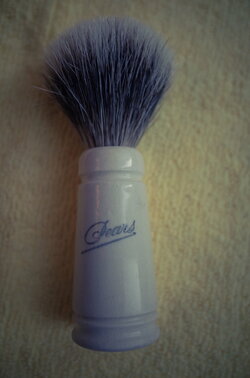 Pears Culmak Ceramic Badger Shaving Brush, England 1.JPG598.1 KB · Views: 44
Pears Culmak Ceramic Badger Shaving Brush, England 1.JPG598.1 KB · Views: 44 -
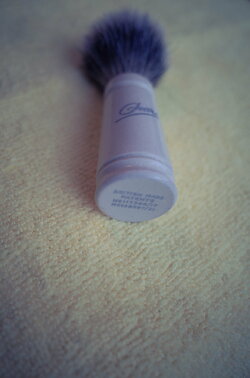 Pears Culmak Ceramic Badger Shaving Brush, England 3.JPG659.7 KB · Views: 37
Pears Culmak Ceramic Badger Shaving Brush, England 3.JPG659.7 KB · Views: 37 -
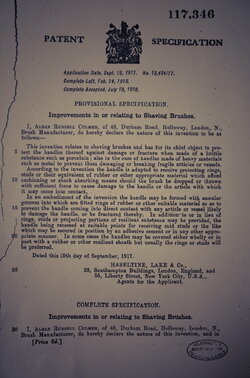 1.JPG971.2 KB · Views: 37
1.JPG971.2 KB · Views: 37 -
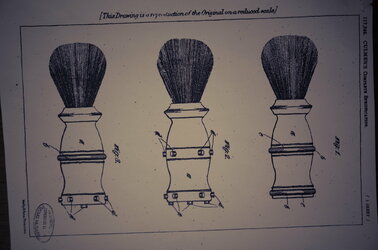 2.JPG735.5 KB · Views: 32
2.JPG735.5 KB · Views: 32 -
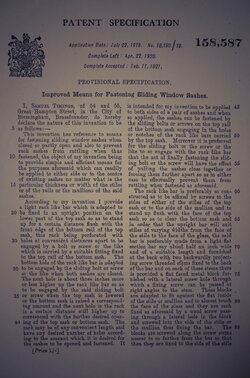 3.JPG1.1 MB · Views: 31
3.JPG1.1 MB · Views: 31 -
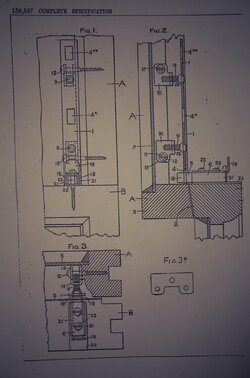 4.JPG769.3 KB · Views: 37
4.JPG769.3 KB · Views: 37 -
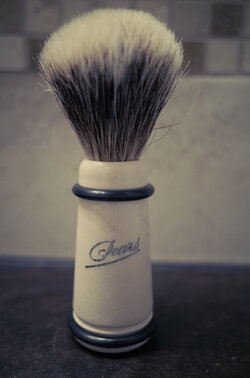 Pears Culmak Ceramic Badger Shaving Brush, England 7.JPG667.3 KB · Views: 34
Pears Culmak Ceramic Badger Shaving Brush, England 7.JPG667.3 KB · Views: 34 -
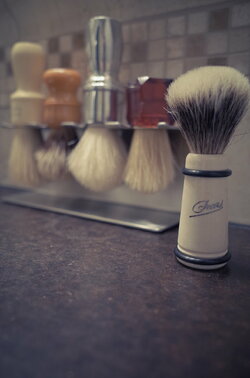 Pears Culmak Ceramic Badger Shaving Brush, England 8.JPG668.7 KB · Views: 45
Pears Culmak Ceramic Badger Shaving Brush, England 8.JPG668.7 KB · Views: 45
